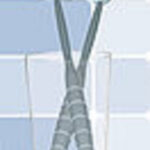More than eight million Americans routinely use smokeless tobacco in the form of chewing tobacco or snuff. Smokeless tobacco usage has been associated with increased risks of a variety of chronic diseases including cancer of the oral cavity, heart disease, and periodontal disease. Despite knowledge of the adverse consequences of chewing tobacco and snuff, very little attention has been directed towards treatments to help the habitual user discontinue this habit. Do mainstream medical therapies used for smoking work for smokeless tobacco users? Here’s a look at some of the medical treatments that have been studied and how they performed:
How to stop using smokeless tobacco: Nicotine gum
Nicotine gum works by slowly releasing nicotine into the body as it’s chewed to help reduce the craving for smoking. It’s been shown to double the rate of smoking cessation when given to cigarette users. Unfortunately, several studies carried using nicotine gum to treat smokeless tobacco users failed to show a long term increase in tobacco cessation rates when evaluated on a long term basis. Some tobacco users did have higher abstinence rates at one month, although this effect was lost by the end of the second month. It’s unclear as to whether nicotine gum may have some short term beneficial effect in reducing the use of smokeless tobacco.
How to stop using smokeless tobacco: Nicotine patch
Several studies looking at use of the nicotine patch failed to show consistent effects on smokeless tobacco cessation rates. Although several of the studies showed a benefit early on in the study, this effect was lost over longer periods of observation. Since some of the studies were conflicting, more research is needed to determine if the nicotine patch can be an effective to aid to those attempting to give up smokeless forms of tobacco.
How to stop using smokeless tobacco: Bupropion
One prescription medication that shows some promise in helping users of smokeless curb their habit is Bupropion. This medication does not replace nicotine but appears to alter certain brain biochemicals that may be related to the desire for nicotine. It was observed as early as 1999 that use of this medication could reduce cravings for nicotine and was confirmed by a patient who was able to discontinue smokeless tobacco after using the drug, despite having failed nicotine replacement therapies. Unfortunately, clinical trials have failed to uniformly show long term positive effects on smokeless tobacco cessation rates. More studies are needed before it can be recommended.
How to stop using smokeless tobacco: Varenicline
This medication is thought to act by binding to nicotine receptors, effectively blocking them, resulting in a reduced desire for nicotine. It also is thought to have some ability to reduce the withdrawal symptoms often experienced by person who discontinue tobacco. Although approved for use by the FDA, no trials have been published addressing its actual effectiveness.
The medical community offers no straightforward answer for those who wish to discontinue use of smokeless tobacco, although use of Bupropion or Varenicline may show some future promise. At this point, the user of smokeless forms of tobacco may best be served by using more conventional methods. Eliminate all forms of smokeless tobacco from your house and car to reduce access and substitute another oral substitute such as chewing gum to guide you through those cravings. Hopefully, further studies will reveal whether any of the current proposed therapies can help those who fail on their own.
Reference:
- The Journal of Family Practice, April 2008






